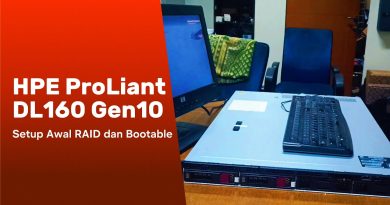Raspberry Pi 3 Model B Review, Tour, and OS Installation
When I was editing this video, I found that, given how many different videos I was stitching together from the past several years, it would be hard to edit it into parts without making it even sloppier. Therefore, I finally got a verified YouTube account, so this will be my longest single-part video so far. I didn’t originally plan it this way, but I guess I’ll be doing longer single-part videos in the future than I’ve previously done. There could be some documentaries in the future, but will have to see. In any case…
This is the first in a series of videos about the Raspberry Pi single-board computer, which really is a series of computers made by the Raspberry Pi Foundation. They are billed as the cheapest computers in the world, and why this may be an exaggeration, they are certainly among the cheapest in the world. They are also designed to be used in IoT and robotics projects, and to this end are usually equipped with a GPIO connector. Their processors are, for a desktop PC, non-standard. This is a detail that I didn’t emphasize much in this video, but it is significant. The processors are ARM processors, as opposed to x86 or x64, and as such are not compatible with the standard versions of Windows and Linux, or most of the application software that runs on them. However, there is a version of Windows IoT core that will run on a Raspberry Pi, as well as several ports of Linux. One of these ports, which will feature in this video, is Raspberry Pi OS, which is a rebranded (and stripped down) port of Debian. Formerly, it was called Raspbian, so I use this name interchangably in my videos.
Here are some handy links:
The Raspberry Pi Foundation:
https://www.raspberrypi.org/
A technical diagram of the Raspberry Pi 3 Model B, which was the specific model that I reviewed in this video:
https://en.wikipedia.org/wiki/Raspberry_Pi#/media/File:Raspberry_Pi_B+_rev_1.2.svg
The Raspberry Pi Imager download page:
The RealVNC VNC Viewer download page (to access the Raspberry Pi via VNC on another computer):
https://www.realvnc.com/en/connect/download/viewer/
Advanced IP Scanner (use this to find the IP address of your “headless” Raspberry Pi when logging in remotely from a Windows PC):
https://www.advanced-ip-scanner.com/
Balena Etcher (Raspberry Pi Imager alternative) download page for Windows:
https://www.balena.io/etcher/
Here are several important disclaimers:
1. In the video, I show how the Raspberry Pi can be run off some mobile phone chargers, as well as some power banks, as well as the USB port of another computer. However, these are not officially supported by the Raspberry Pi Foundation. Therefore, I don’t actually recommend doing this (some of this video footage is old), and I won’t be using anything but the official Raspberry Pi power supply in my subsequent videos.
2. Some of this video footage is old and sloppy, as this project was never originally intended for YouTube. For example, some of the equipment shown was never used in my subseqent projects. There may also be other minor mistakes, but I hope that overall this video is a nice introduction to the Raspberry Pi for new users.
3. The Raspberry Pi used in this video, and the next several, will be the Raspberry Pi 3 Model B, which features a full HDMI port, 4 USB 2.0 ports, 1 GB of RAM (integrated with the CPU), and a 32GB SD card for a boot drive (in line with most ARM-based computers). There are many more choices now available, so today the 3 Model B is one of the oldest and cheapest Raspberry Pi computers available. This means that prices I cite on this video would almost certainly be lower now. The earlier portions of this video were shot when the 3 Model B was still the latest model.
4. I am aware that this video only covers configuring a Raspberry Pi from Windows. Raspberry Pi’s can also be accessed from Linux and Mac OS X, although the specific commands from the Terminal may vary a bit. My understanding is that RealVNC is also available for Linux and Mac OS X (as well as Android, iOS, Chrome OS, Solaris Unix, HP-UX, AIX, and even Raspberry Pi OS), although some configuration may vary.
This video will give a tour of the Raspberry Pi hardware, and follow up with an installation and setup of the Raspbery Pi OS, presuming that the user will want to run the Raspberry Pi “headless,” without its own keyboard and monitor.
by Jon Searles
linux foundation



